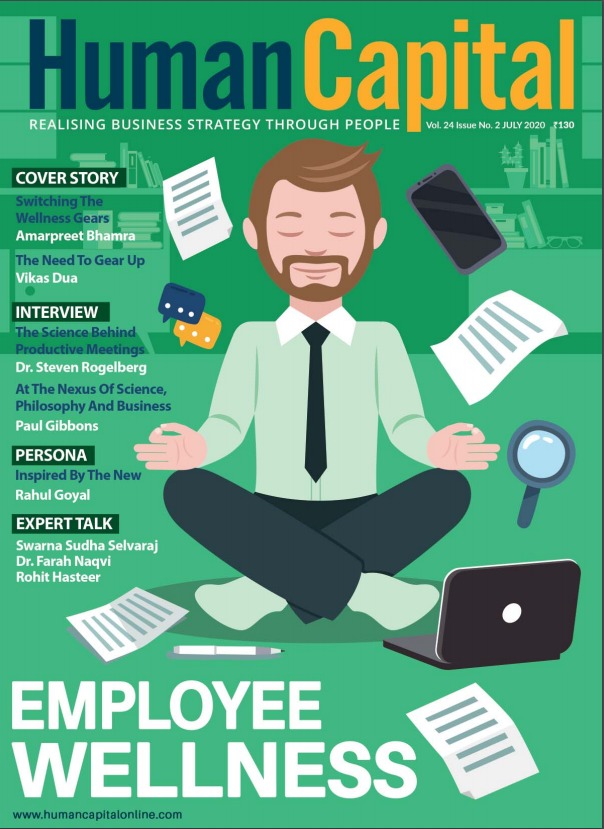Working in the gig economy has been likened to having an affair instead of a meaningful relationship. The precarious nature of work, the lack of scaffolding by an organisation, the transience accompanied by intensity, all point in the direction of an affair that is not meant to last. But is that really true? The term gig work maybe new and trending, but the nature of work has been in existence for centuries. It was only after the industrial revolution that organisations were formed and necessitated workers to be in a seat for a fixed part of the day.
A confluence of factors gave rise to the current wave of the gig economy – the recession of 2007-08, which made companies seek cost-cutting measures through employee redundancies and replacement with contractual workers on assignment, the influx of millennials and generation Z into the workforce, technological advances like smartphones and app-based platforms, the start-up culture, and a shift towards aggregation of both services and those who provide the service. To unpack the psychological impact of these factors on both employers and gig workers is harder than one thinks. This is largely because the data and information are sourced from more mature western markets, despite the fact that India’s highly unregulated, informal sector has been surviving and thriving on the gig economy through the ages. Take for instance, the cook who earns a living by cooking in four or more houses on a daily basis or the migrant worker who works on a farm in another state during the harvest season or even the teacher working in a school during the day but taking tuitions at home in the evening.
According to the McKinsey Global Institute Report (2016), the gig economy encompasses many kinds of casual work for hire – from those doing precarious work to supplement meagre incomes, freelancers using apps and online platforms to source work and other more financially comfortable workers. Basically, the gig economy provides services that are easy to access, on demand. Currently unregulated and relying on the good offices of the organisation and the gig worker, a nuanced approach is required to manage the complexity of the gig economy.
Gig workers are expected to constitute half the workforce by 2020 and 80 percent by 2030. According to PayPal’s 2018 report, one fourth of global freelancers are from India. Of the two to three billion USD global freelancer market, India has a share of one billion. Among start-ups, 70 percent of firms use gig workers for non-core jobs.
The gig work debate
Organisations relying on gig workers can hire without the fear of attrition, spend less on training overheads, and save on office costs. They also benefit from reduced liability and the cost of providing resources as most gig workers use their own equipment.
The benefits of gig work are many. They give freedom to workers to choose projects as per their own schedules - to take on as much or as little work as they need, on hours that suit them and their lifestyle. Businesses, on the other hand, especially where demand for labour fluctuates, can access a good-sized workforce which can fill in when needed. Gig workers can work for many organisations at the same time and experience no gender difference in terms of assignment sharing and payment. People who are averse and often suffer negative health and well-being to the enforced need of being physically present at work also benefit from this flexibility. This is especially true of millennials and generation Z, who do not like to be tied to a routine, and older workers, who need to take time to look after children or care for aging parents. Employees facing a mid-career crisis treat gig work as an opportunity to lengthen their earning years by making use of their skills in a disparate manner.
However, it does not always translate as such. Gig workers are neither employees nor self-employed and may be exploited by businesses through worker misclassification, information asymmetry, surveillance, and wage theft. They may have a flexible schedule, but end up working intensely long hours, often afraid to take time off even when they are ill, because their income is tied to their personal delivery of work. In addition, the work itself is uncertain and insecure, which leads to a constant hustle. What could be a tsunami one month could easily turn into a drought the very next. The lack of safety nets like paid leave, the backing of an organisation, law and regulation in turn create greater stress for the already stressed workers. On freelancing sites, algorithms create an unrelenting pattern of overwork. Freelancers may have to charge lower rates to seem attractive to clients and beat global competition. The psychological risks are exacerbated by isolation and a lack of belonging to an organisation.
“Gig workers are neither employees nor self-employed and may be exploited by businesses. Also, they end up working intensely long hours because their income is tied to their personal delivery of work.”
From an organisational perspective, gig workers have poor identification with normative behaviour and the company culture. Their presence tends to dilute the culture by creating silos. When teamwork is necessary, this can quickly become dysfunctional. In addition, organisations need to constantly upgrade and create new tech platforms, which is very expensive.
The psychological impact of gig work
Management theory differentiates between legal and psychological contracts in employment. The latter are the unwritten agreements, either explicit or implicit regarding the scope of work, use of initiative, evolution of roles and rewards for loyalty.
Gigs are essentially transactional not relational. There is limited commitment on the part of the organisation, which can make workers unhappy. Especially, when they feel that the psychological contract has not been honoured. The organisation may respond that the worker consented to the work conditions. This issue with consent is a grey area because a worker may agree to work under Dickensian conditions of low quality and poorly paid gig work when there is a lack of jobs and there are no options available.
Furthermore, perceptions of the worker and organisation may not be aligned. As in the eye of the beholder, one party can believe the other is failing to live up to the promises that have not been articulated. The social context within which this happens creates a power imbalance. Gig workers need trust and reciprocity from the organisations they work for, along with a sense of fairness. For instance, drivers of app based platforms are sometimes deactivated for poor ratings without an opportunity to state their case.
Workers on app-based platforms often ask for operational costs, which might include maintenance of their vehicle and data for their phones. Some view gig work as being chained to an app, running across town in the hope of good ratings so that they are not deactivated. The inability to negotiate rates or bargain collectively is an added constraint.
Gig work is often associated with the young, who have limited professional experience and are willing to work for inadequate security. They carry the obligations of employees without the commensurate benefits and would prefer to be treated like humans and not algorithms.
A gig worker needs to constantly reinvest in their skills, upgrading or expanding as necessary. This expense is drawn from a variable cash flow and can drain already stressed financial resources. Taxation poses another problem when the earnings are unstable and pay outs have to be made on a regular basis, in advance. Financial anxiety related to payments and debt can lead to a poverty consciousness that results in an inability to prioritise other needs.
The high autonomy and responsibility in gig work can often lead to a bad work-life balance and feelings of guilt. In addition, the stress of always being ‘on call’ can lead to physiological effects in the body that can result in chronic disease like hypertension and type 2 diabetes in susceptible workers.
Overcoming stress and burnout is a growing challenge for gig workers. The 24/7 nature of tech work can result in poor memory and concentration, fatigue, moodiness, feeling like they are ‘running on empty’ added to frustration, discontentment and anxiety. There is also the issue of ambiguity and maintaining boundaries as sometimes friendships and professional relationships can overlap as in the case of musicians and other creative arts.
In a country like India, personal safety is also an important consideration for female gig workers who enter the premises of the client to provide a service through an app‑based platform.
The impact of gig work on family and community is an oft neglected area of concern. Young people end up living at home longer because they cannot afford to leave or support themselves. This increases the burden on parents, who might also be taking care of their aging parents. The financial insecurity and uncertainty of gig work also leaves an imprint at the community level through increased individuation and isolation resulting in an inability to contribute.
“The financial insecurity and uncertainty of gig work also leaves an imprint at the community level through increased individuation and isolation resulting in an inability to contribute.”
End of the affair
Despite its growing pains, the gig economy has itself become a platform for the expression of passion and dreams. The percolation upwards from the lower and middle income groups to white collar workers is organically giving birth to new and cutting-edge ways for individuals to come together and create in a manner that has never been explored before. An example of which are collaborative working spaces, where professionals can work in an environment that allows for both individual creativity and the opportunity to work with others on passion projects. This may well be the future of organisations.
On the other hand, most of the highest paying gig work is currently in the area of artificial intelligence, especially deep learning. It would be wise to consider if we are not actually creating, through gig work, the very means by which it can be eliminated.
Do you think hybrid work arrangements would be a common feature of the workplaces going forward?
Trending
-
SBI General Insurance Launches Digital Health Campaign
-
CredR Rolls Out 'Life Happens' Leave For Its Employees
-
Meesho Announces 30-Week Gender-Neutral Parental Leave Policy
-
Microsoft Unveils Tech Resilience Curriculum To Foster An Inclusive Future
-
60% Indian Professionals Looking For Job Change Due To COVID: Survey
-
SpringPeople And Siemens Collaborate For Digital Transformation Push
-
86% Professionals Believe Hybrid Work Is Essential For Work Life Balance: Report
-
Almost 1 In Every 3 People's Personal Life Affected Due To Work Stress
-
Meesho Rolls Out Reset And Recharge Policy For Employees
-
80% Of Talent Leaders & Academics Say Pandemic Changed Skill Needs For Youth: Report
-
Hero Electric Rolls Out 'Hero Care' Program For Employees
-
Human Capital In Collaboration With ASSOCHAM Hosts Virtual Conference
-
IKEA India, Tata STRIVE Collaborate To Create Employability And Entrepreneurship Opportunities
-
SAP India, Microsoft Launch Tech Skilling Program for Young Women
-
DXC Technology, NASSCOM Collaborate For Employability Skills Program
-
Lenskart To Hire Over 2000 Employees Across India By 2022
-
Mindtree Launches Learn-and-Earn Program
-
Tata AIA Extends 'Raksha Ka Teeka' To Its Employees
-
Swadesh Behera Is The New CPO Of Titan
-
NetConnect Global Plans To Recruit 5000 Tech Professionals In India
-
Hubhopper Plans To Hire 60% Of Indian Podcasters By 2022
-
Corporate India Needs More Women In Leadership Roles: Report
-
Aon to Invest $30 Million and Create 10,000 Apprenticeships by 2030
-
Tech Mahindra Launches ‘Gift a Career’ Initiative for Upskilling of Youth
-
40% Women Prefer Flexible Working Options in Post-COVID World: Survey
-
3 out of 4 companies believe they can effectively hire employees virtually: Report
-
Vodafone , CGI and NASSCOM Foundation launch digital skills platform
-
Odisha: Bank, postal employees to deliver cash for elderly, differently-abled persons
-
Skill India launches AI-based digital platform for "Skilled Workforce"
-
Hiring activity declines 6.73% in first quarter: Survey
-
70% startups impacted by COVID-19 pandemic
-
Bajaj Allianz Life ropes in Santanu Banerjee as CHRO
-
Over 70 Percent MSMEs look at cutting jobs to sustain businesses
-
93 Per Cent employees stressed about returning to office post-lockdown
-
Johnson & Johnson India announces family benefits for same gender partners
-
Indian firms turning friendly towards working mothers
-
Welspun India names Rajendra Mehta as new CHRO
-
Wipro partners with NASSCOM to launch Future Skills platform



Human Capital is niche media organisation for HR and Corporate. Our aim is to create an outstanding user experience for all our clients, readers, employers and employees through inspiring, industry-leading content pieces in the form of case studies, analysis, expert reports, authored articles and blogs. We cover topics such as talent acquisition, learning and development, diversity and inclusion, leadership, compensation, recruitment and many more.
Subscribe Now












































Comment